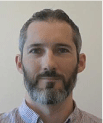Concurrent 29. Oral Presentation for: Integration of the comprehensive Gorgon CO2 surveillance program for history matching of the Dupuy reservoir model
Andrew Haynes A *A Chevron Pty Ltd, Perth, WA, Australia.
The APPEA Journal 63 - https://doi.org/10.1071/AJ22409
Published: 2 June 2023
Abstract
Presented on Thursday 18 May: Session 29
The Gorgon CO2 project (The Gorgon Project is operated by Chevron Australia and is a joint venture of the Australian subsidiaries of Chevron (47.3%), ExxonMobil (25%), Shell (25%), Osaka Gas (1.25%), Tokyo Gas (1%) and JERA (0.417%)) is the world’s largest operational Carbon Capture and Storage (CCS) project dedicated to greenhouse gas abatement. Since starting injection in 2019 it has successfully sequestered more than 7.5 million tonnes of CO2 equivalent (as at 31 January 2023). A comprehensive surveillance program – including reservoir pressure monitoring, 4D seismic, microseismic monitoring, distributed temperature and acoustic sensing, and InSAR surface displacement measurement – provides a wealth of data for developing history-matched static, dynamic and geomechanical models that are instrumental in the operation and development planning of the field. In comparison to modelling of conventional hydrocarbon reservoirs, in which maximising production and ultimate recovery are typically the focus, developing and selecting a suite of representative CCS models requires consideration of an additional set of factors. These factors include modelling CO2 plume movement, managing reservoir pressure at key locations and accommodating geomechanical constraints. This paper will explore these differences, and how the various sources of surveillance data have been integrated into the modelling process to better understand and predict the dynamic behaviour of the Dupuy reservoir.
To access the Oral Presentation click the link on the right. To read the full paper click here
Keywords: 4D, carbon capture and storage, carbon dioxide, CCS, CO2, Dupuy, Gorgon, history matching, InSAR, sequestration, simulation, surveillance.

Andrew Haynes graduated from the University of Melbourne with BEng Hons in Chemical Engineering and BSc in Chemistry. Andrew joined Chevron in 2009 and held various Reservoir Engineer positions before joining Gorgon CO2 in 2021. |


